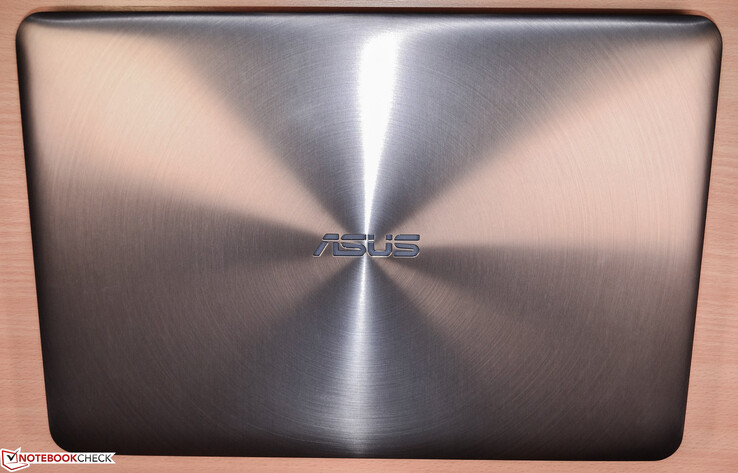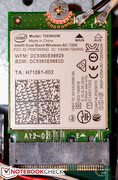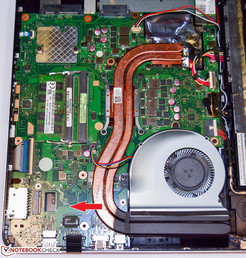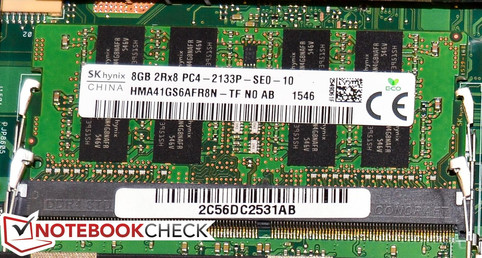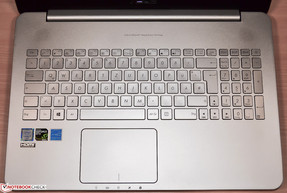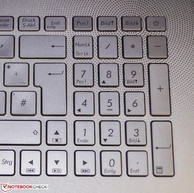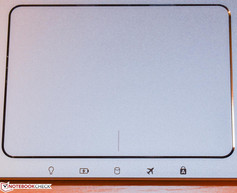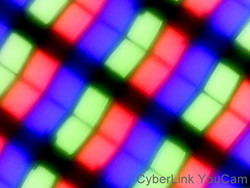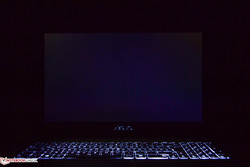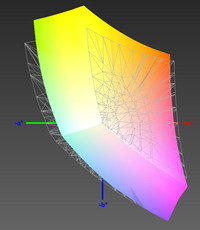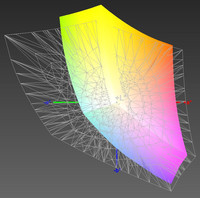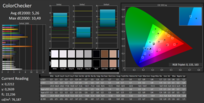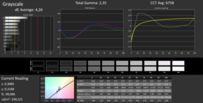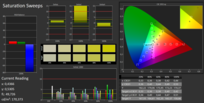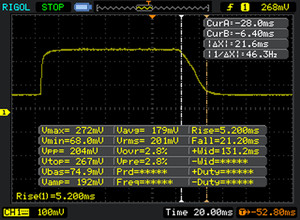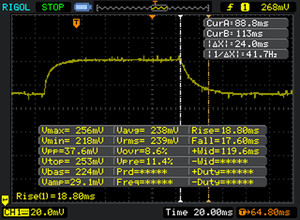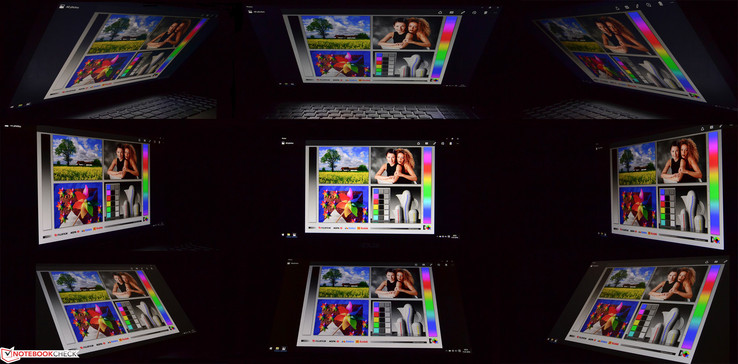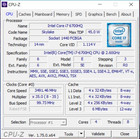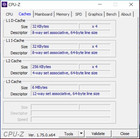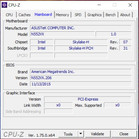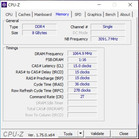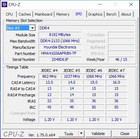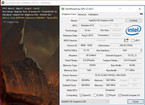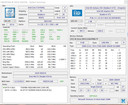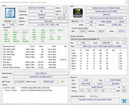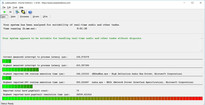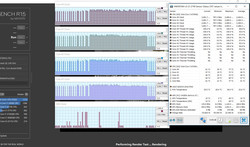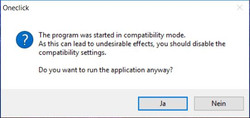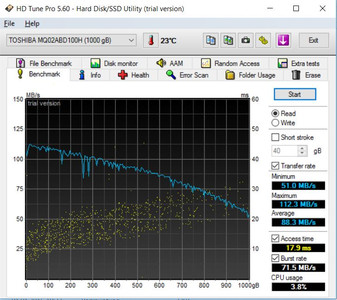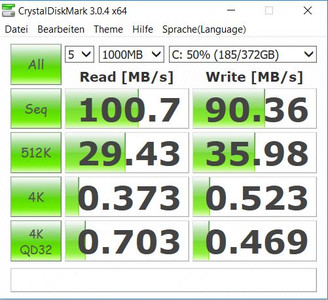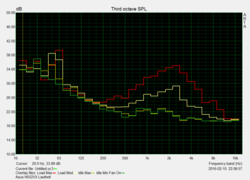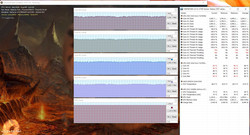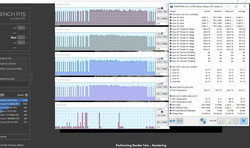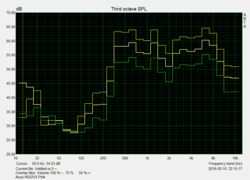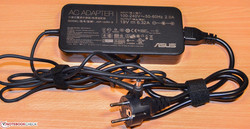Asus N552VX-FY103T Notebook Review

For the original German review, see here.
Asus' N552VX-FY103T is one of the premium models of multimedia all-rounders. Thanks to a Skylake processor and GeForce graphics core, the user is equipped for most application scenarios.
Intel's Core i7-6700HQ processor (8 threads) meets a gaming-suitable Nvidia GeForce 950M graphics core in our review sample. The current model does not have anything in common with previous models of the N550 and N551. Although at a first glance, the former models look thicker and less appealing, they feature removable and stronger batteries. The review sample is a progress just in terms of its looks - but this is a matter of taste.
Our in-depth report reveals how the device fares in each individual test. The former Asus N551JK-CN116H serves as a direct comparison. Similarly or even better configured opponents with a maximum price of 1000 Euros (~$1121) are Asus' GL552JX-CN154T and Acer's Aspire V5-591G-71K2, as well as rivals with less computing but more graphics power (Nvidia GeForce 960M), such as the non-touch version of Lenovo's IdeaPad Y700 15ISK 80NW (touch-model tested at Notebookcheck).
Case
To put things straight: Asus' N552VX is not much slimmer than its predecessor. However, the clever design of the matte-black underside suggests a slim laptop.
Light brown, silver and black dominate the casing. The latter is found on the display's matte bezel and non-slip structured underside. Asus promotes the N552VX as "One-Body Aluminum Casing". Unfortunately, this is not true because the base is composed of two components and the lower part is plastic. However, the upper side shimmers in aluminum that defies fingerprints quite successfully. The same is true of the lid's aluminum back. It looks like the concentric cut familiar in Asus' ZenBooks with an illuminated Asus logo in the center. In addition to the rounded corners and successful surfaces, the concentric perforated grille below the hinges set visual highlights.
The base can be easily warped with a lot of effort. It does not produce any noises. The stability and apparently impeccable build quality convey a solid impression despite a lot of plastic. The display's lid is easy to open with one hand and rocks only slightly during movements. Attention has been paid to ensure sufficient stability here.
Connectivity
The diversity of interfaces in the N552VX-FY103T is satisfactory. Compared with the predecessor, a USB 3.0 Type-C (max. 5 Gbps) has been added. Unfortunately, it is not a USB 3.1 Gen2. This was confirmed by the technical support of Asus Germany upon inquiry. Consequently, this USB 3.0 Type-C does not provide either Thunderbolt or DisplayPort. In addition, three "standard" USB 3.0 (max. 5 Gbps) ports, an Ethernet socket and 3.5 mm combo audio in/out jack are installed. Two external monitors can be connected via a mini-DisplayPort and HDMI out. These interfaces and the DC-in are located on the left. Too bad: Virtually all the ports have been positioned very close to the front, which could lead to obstructions when extensively used. An optical drive is also present. Only CDs/DVDs are compatible with the review sample, but Asus promises configurations with Blu-ray and 4K panels in future. We can only hope that this promise will be kept.
The SD card reader is situated on the front. We test its performance with our Toshiba Exceria Pro SDXC 64 GB UHS-II reference SD card. According to AS SSD, the SD card reader achieves 84.7 MB/s in read and 55 MB/s in write. Copying 250 JPG image files (approx. 5 MB each) was performed at 54 MB/s. These results are average.
Although the status LEDs on the laptop's front edge are not in the area of the input devices, they are clearly visible. This is particularly helpful at night since status LEDs in the vicinity of the input devices might prove distracting. One LED shines orange when the battery is low and green when fully charged. All other LEDs shine white.
Communication
Thanks to the very high-quality Intel Dual Band Wireless-AC 7265 Wi-Fi/Bluetooth 4.0 module, Asus' N552VX-FY103T achieves high speeds in either the 2.4 or 5 GHz band. This pays off, particularly in city centers, as well as in office or apartment buildings where 2.4 GHz Wi-Fi usually prevails and interferes with the user's own transmission rates. The option of using the 5 GHz band has advantages here.
The author setup a personal test scenario in a reinforced concrete apartment building (12 other routers). A 2.4 GHz band router, which was deliberately hidden unfavorably behind a 49-inch screen, was used for connecting to the Internet. Although the author closed all the doors, the connection remained stable with at least 2 signal bars in every corner of the apartment. The reception was excellent with 5 bars in the front yard (25 m/~82 ft linear to the router through a window). The review sample's reception was impressive in this intentionally unfavorable test setup. Therefore, problems will be unlikely whether at home with a good router or in an office building with a run-of-the-mill router.
Accessories
In addition to the power supply, only the instructions and warranty notes were found in the box. No recovery media or a recovery partition was included.
Maintenance
Unfortunately, traditionally removable batteries and maintenance hatches are no longer a matter of course even in larger, high-performance laptops such as the review sample. At least, Asus has incorporated a maintenance hatch that is secured by two screws. It is easy to open and allows accessing the hard drive and two RAM banks, but not the fan or, regrettably, the empty M.2 SSD slot (22x80mm/~0.86x3.1in).
Warranty
Asus includes a 24-month limited warranty from the date of purchase. The battery's warranty is limited to 12 months. More information can be found on Asus' warranty card.
Input Devices
Keyboard
We also find an island-style (chiclet) keyboard here. All keys, including the function keys and the narrower 1 cm (~0.4 in) number pad, are flat. Once again, Asus has incorporated the power button in the keyboard's upper right. Play, stop, forward & back are mapped on the arrow keys. Everything else is found where expected.
Thanks to the sufficient drop, distinct pressure point and the lightly cushioned stroke, typing is very convenient and quiet (personal subjective impression). The author did not discover any flaws in quality (clattering, yielding). When the three-level keyboard backlight is disabled the black-gray lettering of the flat, non-slip keys provide a good contrast - at least during daytime. The letters glow in bright white-blue when the light is turned on. They are then quite legible only in dimmed surroundings (including dimmed screen brightness).
Touchpad
The keyless ClickPad makes a compelling impression. Its surface is quite smooth, which provides an outstanding tactile contrast to the impeccably cut aluminum edges. A 4 mm (~0.16 in) wide area that does not detect touch is found in all edges of the touchpad. Thanks to the touchpad's above average size and superb responsiveness coupled with good accuracy, the author could dispense with an external mouse without any problems. Drag & drop always functioned reliably. Subjectively, the "keys" with a pleasingly short drop provided the author with ideal resistance and crisp pressure point. They confirmed every click with a restrained audible feedback. Up to four fingers are detected at the same time. Asus' Smart Gesture enables configuring four-finger gestures comfortably.
Display
Asus promises different configurations in future that will also include 4K screens. At the time of testing, "only" the LG Philips LP156WF6-SPB5 as installed in the review sample was available.
A Full HD panel is recommended for 15.6-inch formats. The screen in our review sample is a matte, 15.6-inch, AH IPS screen with a 16:9 aspect ratio and has a native resolution of 1920x1080 pixels (Full HD). Its average brightness of 304 cd/m² (336 cd/m² maximum) is a very good rate that is clearly above the average for this category. The brightness is not dimmed in battery mode (336 cd/m² maximum). Backlight bleeding on a completely black screen (RGB: 0,0,0) is only visible to the naked eye in a dark room, but already in level 6 (144 cd/m²), see screenshot. This increases at higher brightness. Minor clouding (white spots) exist in the upper left and right corner and lower center. The keyboard backlight was enabled for determining a reference rate of the backlight bleeding intensity. Neither backlight bleeding nor clouding were visible in the evening in a dimmed room, even on a black picture (RGB: 0,0,0).
| |||||||||||||||||||||||||
Brightness Distribution: 85 %
Center on Battery: 336 cd/m²
Contrast: 988:1 (Black: 0.34 cd/m²)
ΔE ColorChecker Calman: 5.26 | ∀{0.5-29.43 Ø4.79}
ΔE Greyscale Calman: 4.26 | ∀{0.09-98 Ø5}
88% sRGB (Argyll 1.6.3 3D)
57% AdobeRGB 1998 (Argyll 1.6.3 3D)
64% AdobeRGB 1998 (Argyll 3D)
87.7% sRGB (Argyll 3D)
67.9% Display P3 (Argyll 3D)
Gamma: 2.35
CCT: 6758 K
| Asus N552VX-FY103T GeForce GTX 950M, 6700HQ, Toshiba MQ02ABD100H | Asus N551JK-CN166H GeForce GTX 850M, 4200H, HGST Travelstar 5K1000 HTS541010A9E680 | Acer Aspire V5-591G-71K2 GeForce GTX 950M, 6700HQ, Toshiba MQ02ABF050H (SSHD 500 + 8 GB) | Asus GL552JX-CN154H GeForce GTX 950M, 4720HQ, Micron M600 MTFDDAV128MBF | Lenovo Ideapad Y700 15ISK 80NW GeForce GTX 960M, 6700HQ, Samsung MZNLN128HCGR-000L2 | |
|---|---|---|---|---|---|
| Display | 6% | 23% | 7% | -38% | |
| Display P3 Coverage (%) | 67.9 | 67.3 -1% | 84.9 25% | 67.8 0% | 38.55 -43% |
| sRGB Coverage (%) | 87.7 | 96.7 10% | 99.8 14% | 97.5 11% | 57.6 -34% |
| AdobeRGB 1998 Coverage (%) | 64 | 69.4 8% | 83.3 30% | 70 9% | 39.86 -38% |
| Response Times | -7% | 6% | |||
| Response Time Grey 50% / Grey 80% * (ms) | 42 ? | 44 ? -5% | 40.8 ? 3% | ||
| Response Time Black / White * (ms) | 26 ? | 28 ? -8% | 24 ? 8% | ||
| PWM Frequency (Hz) | 200 ? | 58.1 | |||
| Screen | -12% | -41% | 4% | -24% | |
| Brightness middle (cd/m²) | 336 | 323 -4% | 249 -26% | 326 -3% | 258.6 -23% |
| Brightness (cd/m²) | 304 | 312 3% | 240 -21% | 317 4% | 242 -20% |
| Brightness Distribution (%) | 85 | 83 -2% | 86 1% | 91 7% | 88 4% |
| Black Level * (cd/m²) | 0.34 | 0.38 -12% | 0.48 -41% | 0.31 9% | 0.277 19% |
| Contrast (:1) | 988 | 850 -14% | 519 -47% | 1052 6% | 934 -5% |
| Colorchecker dE 2000 * | 5.26 | 7.4 -41% | 10.15 -93% | 4.14 21% | 8.1 -54% |
| Colorchecker dE 2000 max. * | 10.49 | ||||
| Greyscale dE 2000 * | 4.26 | 6.24 -46% | 12.13 -185% | 5.46 -28% | 7.23 -70% |
| Gamma | 2.35 94% | 2.98 74% | 2.48 89% | 2.44 90% | 1.99 111% |
| CCT | 6758 96% | 8098 80% | 13445 48% | 7574 86% | 6567 99% |
| Color Space (Percent of AdobeRGB 1998) (%) | 57 | 69 21% | 74 30% | 64 12% | 36.5 -36% |
| Color Space (Percent of sRGB) (%) | 88 | 100 14% | 97 10% | 57.2 -35% | |
| Total Average (Program / Settings) | -3% /
-7% | -8% /
-22% | 6% /
5% | -19% /
-23% |
* ... smaller is better
The illumination of 85% is solid and subjectively conveys a homogeneous brightness distribution. The screen's brightness can be set sufficiently fine in up to 10 levels. We measured 144 cd/m² at level 6, which we also used for our battery tests. The black level of 0.34 cd/m² alongside the maximum brightness results in a contrast of 988:1. The reproducible colors cover 88% of the sRGB color space. This is a very good rate for a laptop. By comparison: Viewsonic's VP2780-4K desktop monitor designed for CAD, video and photographic applications achieves 97% of the sRGB and 67% of the Adobe color space according to our tests. Only RGB LED panels currently provide noticeably more colors. An ideal DeltaE rate is less than 3. The screen in Asus N552VX-FY103T just misses this with 5 (ColorChecker) and 4 (Grayscale). Fortunately, a bluish tint is not present. Our color profile linked in the box could further improve the screen.
Compared with the rivals, the AH IPS screen (LG LP156WF6-SPB4) in Asus' N552VX-FY103T (review sample) scores well and ends up in the second place directly behind the 15.6-inch Asus GL552JX (Samsung 156HL01-102 panel). A good outcome since not many better alternatives exist in this category to date. The brightness of our review sample's predecessor is on par and marginally better in the AdobeRGB coverage with 69%, but clearly loses ground in contrast, dE Color and dE Grayscale. Both other rivals (the Acer Aspire V5-591G71K2 and the Lenovo Y700 15ISK 80NW) are not on this high level - too bad since otherwise, Lenovo's Y700 15ISK 80NW is very promising.
Thanks to an average brightness of 304 cd/m², the review sample is definitely suitable for outdoor use.
Display Response Times
| ↔ Response Time Black to White | ||
|---|---|---|
| 26 ms ... rise ↗ and fall ↘ combined | ↗ 5 ms rise | |
| ↘ 21 ms fall | ||
| The screen shows relatively slow response rates in our tests and may be too slow for gamers. In comparison, all tested devices range from 0.1 (minimum) to 240 (maximum) ms. » 61 % of all devices are better. This means that the measured response time is worse than the average of all tested devices (20.3 ms). | ||
| ↔ Response Time 50% Grey to 80% Grey | ||
| 42 ms ... rise ↗ and fall ↘ combined | ↗ 18 ms rise | |
| ↘ 24 ms fall | ||
| The screen shows slow response rates in our tests and will be unsatisfactory for gamers. In comparison, all tested devices range from 0.165 (minimum) to 636 (maximum) ms. » 66 % of all devices are better. This means that the measured response time is worse than the average of all tested devices (31.7 ms). | ||
Screen Flickering / PWM (Pulse-Width Modulation)
| Screen flickering / PWM not detected | ||
In comparison: 53 % of all tested devices do not use PWM to dim the display. If PWM was detected, an average of 8167 (minimum: 5 - maximum: 343500) Hz was measured. | ||
Performance
With its strong Intel Core i7-6700HQ quad-core CPU, Asus N552VX-FY103T is well-equipped for most tasks imaginable. A Core i processor (4 cores, 8 threads) is the first choice for a multimedia laptop. Unfortunately, Nvidia's GPU is only an upper mid-range model and is not really the perfect match for the high-performance CPU. Our review sample finds its limits in gaming. Nevertheless, up-to-date games (2015/2016) can be risked when willing to make compromises thanks to Nvidia's GeForce 950M (1366 x 768 pixels, no AA, medium-high details). Office software or multimedia applications are not a challenge, and even sophisticated Photoshop and PremierPro sessions (CPU-driven, GPU capacity at 30 %) are not a problem for the hardware - at least not in AC mode (see processor). Thus, users who do not prioritize games, but frequently edit and render videos should cope well with this laptop.
Processor
Asus N552VX-FY103T has more than enough power for all the standard application scenarios with Intel's Core i7-6700HQ (Skylake) quad-core processor. It is not a ULV processor (TDP: 15 watts), but a standard mobile processor (TDP: 45 watts). The CPU clocks at a base speed of 2.6 GHz, which can be boosted to 3.1 GHz (four cores), 3.3 GHz (two cores) and 3.5 GHz (one core) via Turbo. Turbo is also utilized frequently, but unfortunately only in AC mode.
Cinebench R15 delivers a fairly realistic CPU load. We looped the program and discovered that the review sample tends to throttle excessively at a load of below 45% (regular fluctuations from 800 to 3091 MHz, see screenshot). The outcome is only half the score then. Unfortunately, the graphics card (see gaming performance) presents the same picture. We have to note positively that the full performance is provided when inserting the power cord into an outlet. As soon as the battery is recharged by 45%, the performance of Cinebench R15 is the same in AC and battery mode.
The Skylake processor can only outperform its direct Broadwell predecessor Intel Core i7-5700HQ in single-thread applications (both CPUs calculate at 3.5 GHz here). The Broadwell model has the lead in Multithread applications due to its higher Turbo Boost. The improvements made to the Skylake architecture are not enough to compensate for the higher speeds of the Broadwell models. Skylake brings advantages to integrated GPUs instead. Compared with last year's Intel Core i7-4720HQ and Intel Core i7-4710HQ Haswell models, the Skylake architecture delivers a very similar performance level in single thread applications. On the other hand, according to Cinebench, Skylake shines in Multithread applications and Intel's surpasses the Core by 25% (reason: better Turbo Boost utilization).
More benchmarks and comparisons can be found in the special article about Intel's Core i7-6700HQ.
| Asus N552VX-FY103T GeForce GTX 950M, 6700HQ, Toshiba MQ02ABD100H | Asus N551JK-CN166H GeForce GTX 850M, 4200H, HGST Travelstar 5K1000 HTS541010A9E680 | Acer Aspire V5-591G-71K2 GeForce GTX 950M, 6700HQ, Toshiba MQ02ABF050H (SSHD 500 + 8 GB) | Asus GL552JX-CN154H GeForce GTX 950M, 4720HQ, Micron M600 MTFDDAV128MBF | Lenovo Ideapad Y700 15ISK 80NW GeForce GTX 960M, 6700HQ, Samsung MZNLN128HCGR-000L2 | |
|---|---|---|---|---|---|
| Cinebench R10 | -30% | 1% | -6% | -2% | |
| Rendering Single 32Bit (Points) | 5453 | 4773 -12% | 5547 2% | 5104 -6% | 5283 -3% |
| Rendering Multiple CPUs 32Bit (Points) | 20388 | 10668 -48% | 20433 0% | 19276 -5% | 20302 0% |
| Cinebench R11.5 | -33% | 1% | -5% | -6% | |
| CPU Single 64Bit (Points) | 1.68 | 1.46 -13% | 1.68 0% | 1.54 -8% | 1.48 -12% |
| CPU Multi 64Bit (Points) | 7.42 | 3.5 -53% | 7.48 1% | 7.35 -1% | 7.46 1% |
| Cinebench R15 | -32% | 1% | -5% | -6% | |
| CPU Single 64Bit (Points) | 146 | 130 -11% | 148 1% | 133 -9% | 129 -12% |
| CPU Multi 64Bit (Points) | 673 | 323 -52% | 677 1% | 669 -1% | 676 0% |
| Total Average (Program / Settings) | -32% /
-32% | 1% /
1% | -5% /
-5% | -5% /
-4% |
System Performance
PCMark 7 and 8 consistently produced errors with 0 points at the end of the 30 minute tests. This problem still existed after several updates (drivers, benchmarks, operating system) and could ultimately only be bypassed. All tests (Score, Lightweight, Work, Creativity, etc.) were performed individually. Windows 10 Home 64-bit and the "compatibility mode" (see screenshot) were presumably the reasons for this. According to Futuremark's homepage, PCMark 7 & 8 do not officially support Win10 (at the time of testing).
In addition to the processor's performance, PCMark 7 and 8 also test the performance of the graphics card, RAM and above all the storage devices.
Compared with the review sample, the former Asus N551JK-CN166H and Acer's Aspire V5-591G-71K2 are on a par since these devices, like the Asus N552VX-FY103T review sample, are not equipped with an SSD. Asus' GL552JX and Lenovo's IdeaPad Y700 15ISK 80NW have an edge thanks to an SSD.
Depending on the test, on average, Asus N552VX-FY103T reached a 20% lower score in battery mode (charged >45%) than in AC mode. It was even 50% fewer points in the battery state of <45%.
However, the review sample pleased with absolutely smooth handling, insensibility to excessive multitasking, and fast program and operating system startups even without an SSD in routine use.
| Asus N552VX-FY103T GeForce GTX 950M, 6700HQ, Toshiba MQ02ABD100H | Asus N551JK-CN166H GeForce GTX 850M, 4200H, HGST Travelstar 5K1000 HTS541010A9E680 | Acer Aspire V5-591G-71K2 GeForce GTX 950M, 6700HQ, Toshiba MQ02ABF050H (SSHD 500 + 8 GB) | Asus GL552JX-CN154H GeForce GTX 950M, 4720HQ, Micron M600 MTFDDAV128MBF | Lenovo Ideapad Y700 15ISK 80NW GeForce GTX 960M, 6700HQ, Samsung MZNLN128HCGR-000L2 | |
|---|---|---|---|---|---|
| PCMark 7 | -3% | -2% | 41% | 36% | |
| Score (Points) | 4714 | 4131 -12% | 4673 -1% | 5829 24% | 5918 26% |
| Creativity (Points) | 7837 | 7266 -7% | 7654 -2% | 10382 32% | 9899 26% |
| Productivity (Points) | 3507 | 3494 0% | 3382 -4% | 5180 48% | 5008 43% |
| Lightweight (Points) | 3709 | 3941 6% | 3745 1% | 5889 59% | 5543 49% |
| PCMark 8 | -12% | 7% | 8% | 11% | |
| Work Score Accelerated v2 (Points) | 4503 | 3881 -14% | 4747 5% | 4972 10% | 5011 11% |
| Home Score Accelerated v2 (Points) | 3452 | 3113 -10% | 3719 8% | 3637 5% | 3845 11% |
| Total Average (Program / Settings) | -8% /
-6% | 3% /
1% | 25% /
30% | 24% /
28% |
| PCMark 7 Score | 4714 points | |
| PCMark 8 Home Score Accelerated v2 | 3452 points | |
| PCMark 8 Work Score Accelerated v2 | 4503 points | |
Help | ||
Storage Devices
Data is stored on an SSHD by Toshiba. Its capacity of 1000 GB should be enough and is silent at 5400 revolutions per minute. The integrated 8 GB of SSD cache launches the operating system and programs quickly. The performance is average, yet sufficient for everyday use. Unfortunately, the empty M.2 22x80 mm (/~0.86x3.1in) slot cannot be accessed via the maintenance hatch. Thus, most buyers will have to be happy with the Toshiba SSHD installed ex-factory.
A YouTube video that shows how to integrate an M.2 SSD in Asus' N552VX in detail can be found here.
Graphics Card
The GeForce 950M houses the same GM108 chip (Maxwell) as the older, only marginally lower clocked Nvidia GeForce 850M with 640 Shader units and a 128-bit interface for GDDR5/DDR3. The DDR3 is mostly utilized as VRAM, which prevents the GM108 chip from developing its full potential. 4096 MB places the Acer Aspire V5-591G-71K2 slightly ahead of versions with 2048 MB of DDR3 VRAM. The comparison with MSI's PE60 2QD that is equipped with a GDDR5 VRAM is also interesting.
Nvidia's GeForce 950M with a DDR3 VRAM clocks at a base clock of 993 MHz, which can be boosted to 1124 MHz via Turbo. Asus follows Nvidia's specifications exactly. The 2048 MB DDR3 VRAM memory clocks at 2002 MHz.
Looking at our "Computer Games on Laptop Graphics Cards", Nvidia's GeForce 950M is three times as fast as the CPU-integrated and considerably more frugal Intel HD Graphics 530. The latter takes care of less computing-intensive (2D) graphic calculations, and thus unloads the battery, thanks to Optimus technology. Switching between both cores is automatic, but the user can always intervene manually.
| 3DMark 11 - 1280x720 Performance | |
| Lenovo Ideapad Y700 15ISK 80NW | |
| Acer Aspire V5-591G-71K2 | |
| MSI PE60 2QD | |
| Asus N552VX-FY103T | |
| Asus GL552JX-CN154H | |
| Asus N551JK-CN166H | |
| 3DMark | |
| 1920x1080 Fire Strike Score | |
| Lenovo Ideapad Y700 15ISK 80NW | |
| MSI PE60 2QD | |
| Acer Aspire V5-591G-71K2 | |
| Asus N552VX-FY103T | |
| Asus GL552JX-CN154H | |
| Asus N551JK-CN166H | |
| 1280x720 Cloud Gate Standard Score | |
| Lenovo Ideapad Y700 15ISK 80NW | |
| MSI PE60 2QD | |
| Acer Aspire V5-591G-71K2 | |
| Asus N552VX-FY103T | |
| Asus GL552JX-CN154H | |
| Asus N551JK-CN166H | |
| 1280x720 Ice Storm Standard Score | |
| Acer Aspire V5-591G-71K2 | |
| Lenovo Ideapad Y700 15ISK 80NW | |
| Asus N551JK-CN166H | |
| Asus N552VX-FY103T | |
| 3DMark 11 Performance | 4579 points | |
| 3DMark Ice Storm Standard Score | 58288 points | |
| 3DMark Cloud Gate Standard Score | 14578 points | |
| 3DMark Fire Strike Score | 2917 points | |
Help | ||
Gaming Performance
The user will have to be satisfied with medium presets and the 1366x768 HD resolution in most up-to-date 3D games (2015/2016). A higher rendering quality is possible in games before 2014.
The 3DMark Cloud Gate Standard score dropped by 6% in battery mode (Nvidia Battery Boost disabled, battery state >45%), the "BioShock Infinite" benchmark (high preset) by 16%, and "The Rise of the Tomb Raider" (medium preset) by 17%. Unfortunately, enabling Nvidia's Battery Boost (e.g. 35 FPS) did not change this. Anyway, mobile gaming is not the strength of Asus' N552VX-FY103T due to the very limited battery capacity.
A similar picture as in the PCMark performance can be seen here. Moderate CPU and GPU load lead to minor throttling in battery mode (regardless of the battery state). Consequently, the graphics card's Turbo (1124 MHz) is only utilized heavily in AC mode during gaming (simultaneous CPU + GPU load). On a positive note, the full power is retrieved as soon as the power supply is connected.
The GPU stress test FurMark (multi GPU) produces high GPU load. The outcomes: Battery state < 45% = significant throttling (regular fluctuations from 600 to 1124 MHz); battery state > 45% = no throttling. These results are similar to those in the Cinebench R15 test.
Nvidia's GeForce 960M installed in Lenovo's IdeaPad Y700 15ISK 80NW is considerably stronger with 4096 MB of GDDR5 VRAM; we did not notice any throttling in Lenovo's laptop.
| Rise of the Tomb Raider | |
| 1366x768 Medium Preset AF:2x | |
| Asus N551ZU-CN007H | |
| MSI PE60 2QD | |
| Asus N552VX-FY103T | |
| 1920x1080 High Preset AA:FX AF:4x | |
| Asus N551ZU-CN007H | |
| MSI PE60 2QD | |
| Asus N552VX-FY103T | |
| BioShock Infinite | |
| 1366x768 Medium Preset | |
| Lenovo Ideapad Y700 15ISK 80NW | |
| MSI PE60 2QD | |
| Asus N552VX-FY103T | |
| Asus GL552JX-CN154H | |
| Asus N551ZU-CN007H | |
| 1366x768 High Preset | |
| Lenovo Ideapad Y700 15ISK 80NW | |
| MSI PE60 2QD | |
| Asus N552VX-FY103T | |
| Asus GL552JX-CN154H | |
| Asus N551ZU-CN007H | |
| 1920x1080 Ultra Preset, DX11 (DDOF) | |
| Lenovo Ideapad Y700 15ISK 80NW | |
| MSI PE60 2QD | |
| Asus N552VX-FY103T | |
| Asus GL552JX-CN154H | |
| Asus N551ZU-CN007H | |
| Dirt Rally | |
| 1366x768 Medium Preset | |
| Asus GL552JX-CN154H | |
| Acer Aspire V5-591G-71K2 | |
| Asus N552VX-FY103T | |
| Asus N551ZU-CN007H | |
| 1920x1080 High Preset | |
| Acer Aspire V5-591G-71K2 | |
| Asus N552VX-FY103T | |
| Asus GL552JX-CN154H | |
| Asus N551ZU-CN007H | |
| 1920x1080 Ultra Preset AA:4x MS | |
| Acer Aspire V5-591G-71K2 | |
| Asus GL552JX-CN154H | |
| Asus N552VX-FY103T | |
| Asus N551ZU-CN007H | |
| low | med. | high | ultra | |
|---|---|---|---|---|
| BioShock Infinite (2013) | 101.5 | 84.3 | 27.7 | |
| Dirt Rally (2015) | 90.7 | 56.3 | 21.7 | |
| Rise of the Tomb Raider (2016) | 35 | 21 |
Emissions
System Noise
The fan in Asus' N552VX-FY103T was always active even while idling (system cooling guideline: active). However, it was quiet at close range and consequently hardly discernible from normal ambient noises. The speed climbed when Prime95 was enabled, and a subtle noise could be heard at a distance of approximately one meter (~3 ft). The waste heat increased even further when the GPU stress test FurMark was added, and the noise became perceptibly louder; it was still restrained and not very distracting. Our review sample's noise behavior was pleasant in all load scenarios.
Only the idle noise level is expected in normal office use. 30 dB(A) can be described as barely audible and up to 34 dB(A) as quiet. The fan's higher noise level will hardly distract games or the video night due to music or ambient noises.
The noise production of our comparison laptops in this test is on par with 30 to 33 dB(A). Lenovo's Y700 15ISK 80NW and Asus' GL552JX' are almost inaudible with 30 dB(A) in idle min and avg. The review sample (37 dB(A)) and Asus' GL552JX (36 dB(A)) are both audible but still quiet in medium load. Lenovo's Y700 15ISK 80NW is the loudest (46 dB(A)) under full load. However, this noise level is superb in view of the performance in conjunction with the compact size. The stronger Nvidia GeForce 960M graphics card also prompts the cooling system to maximum performance.
| Asus N552VX-FY103T GeForce GTX 950M, 6700HQ, Toshiba MQ02ABD100H | Asus N551JK-CN166H GeForce GTX 850M, 4200H, HGST Travelstar 5K1000 HTS541010A9E680 | Acer Aspire V5-591G-71K2 GeForce GTX 950M, 6700HQ, Toshiba MQ02ABF050H (SSHD 500 + 8 GB) | Asus GL552JX-CN154H GeForce GTX 950M, 4720HQ, Micron M600 MTFDDAV128MBF | Lenovo Ideapad Y700 15ISK 80NW GeForce GTX 960M, 6700HQ, Samsung MZNLN128HCGR-000L2 | |
|---|---|---|---|---|---|
| Noise | -2% | -2% | 5% | -0% | |
| off / environment * (dB) | 31.3 | ||||
| Idle Minimum * (dB) | 33.1 | 32.1 3% | 32.6 2% | 30 9% | 30.4 8% |
| Idle Average * (dB) | 33.2 | 32.9 1% | 32.6 2% | 30 10% | 30.5 8% |
| Idle Maximum * (dB) | 33.2 | 33.7 -2% | 32.6 2% | 31.3 6% | 33.3 -0% |
| Load Average * (dB) | 37.7 | 42 -11% | 42.7 -13% | 36.9 2% | 41.4 -10% |
| Load Maximum * (dB) | 43.4 | 44.8 -3% | 45.5 -5% | 44.7 -3% | 47 -8% |
* ... smaller is better
Noise level
| Idle |
| 33.1 / 33.2 / 33.2 dB(A) |
| HDD |
| 33.3 dB(A) |
| DVD |
| 37.7 / dB(A) |
| Load |
| 37.7 / 43.4 dB(A) |
 | ||
30 dB silent 40 dB(A) audible 50 dB(A) loud |
||
min: | ||
Temperature
The review sample does not heat up excessively on the outside. We measured a maximum temperature of 41.5 degrees Celsius (~107 degrees Fahrenheit) during the stress test (Prim95 + FurMark). It gets much warmer inside with up to 96 degrees Celsius (~204 degrees Fahrenheit). However, high temperatures are not recorded during normal use (no stress test). Therefore, nothing but the battery's low capacity stands in the way of the laptop’s use.
The processor performs the Prime95 stress test (without FurMark) at the maximum Multithread clock of 3.1 GHz in AC mode. It throttles in battery mode (see Processor). The GPU also runs at full speed (1124 MHz) during the FurMark stress test (without Prime95); it throttles in battery mode (see Gaming Performance).
The CPU in the Asus N552VX-FY103T review sample performs the Prime95 Large FFTs + FurMark stress test (runs for at least one hour) almost consistently at full speed in AC mode (4 cores, 3.1 GHz). Throttling, i.e. clock rate drops to below the base speed of 2.6 GHz, is not observed. The graphics core stably maintains its full clock of 1124 MHz. The CPU and then the GPU run at full speed, quickly alternating (battery state: < 60%). The graphics core remains at 281 MHz when the battery state drops to below 60% (and then rarely fluctuates between 600 and 1124 MHz); the CPU then clocks at 800 MHz (and also rarely fluctuates to 3.1 GHz).
Outcome: Throttling - unfortunately yes in both processor and graphics core, but not due to critical temperatures and not in AC mode. As soon as the power supply is connected, the CPU and GPU clock at full speed again. The temperatures do not reach critical rates in normal use or during games. Throttling is still recorded in battery mode (see Gaming Performance).
Presumably Asus has made modifications to compensate for the battery's low capacity at the cost of performance in battery mode. Fortunately, these performance losses are only an issue in battery mode when performing tasks that load the CPU and GPU simultaneously. The subsequent 3DMark 11 (with power cord) achieves the full score after the Prime95 Large FFTs + FurMark stress test.
(±) The maximum temperature on the upper side is 41.5 °C / 107 F, compared to the average of 36.9 °C / 98 F, ranging from 21.1 to 71 °C for the class Multimedia.
(+) The bottom heats up to a maximum of 39 °C / 102 F, compared to the average of 39.2 °C / 103 F
(+) In idle usage, the average temperature for the upper side is 25.2 °C / 77 F, compared to the device average of 31.3 °C / 88 F.
(+) The palmrests and touchpad are reaching skin temperature as a maximum (32.2 °C / 90 F) and are therefore not hot.
(-) The average temperature of the palmrest area of similar devices was 28.7 °C / 83.7 F (-3.5 °C / -6.3 F).
Speakers
If disregarding the complete lack of bass, the two upward-facing speakers do an excellent job (for a laptop). Dialogs in videos sound rich and natural. The maximum volume should be sufficient for medium-sized rooms of up to 20 m² (65 ft²). Sound is rendered clearly, without any distortions whatsoever (also in Enya - "May It Be") and it does not annoy with fluctuating volumes even at high levels. The default driver offers superb configuration options for adapting the audio quality (equalizer presets & user-defined modifications, ambient effects, virtual surround, etc.). Configuration via the AudioWizard is also available. The author did not use this since the following two settings already provided outstanding results. Low-pitches (not bass) can be set very well via the equalizer preset "Club" and "Live". Dynamic and surround are exceptional for a laptop when the option "Virtual Surround" is enabled. Less is sometimes simply more, and it is user-friendly to achieve such good results with these small setting options.
Weighty tracks like Madonna's "Frozen" are rendered sufficiently and are not at all as flat and tinny as known in laptops. However, the user should not expect to find a Bose home audio system in a laptop.
The sound quality of the audio jack in conjunction with a good headset makes a very good impression. Superb results in dynamics and basses are achieved thanks to the default driver's good configuration options. The internal speaker and audio jack of Asus' N552VX-FY103T are controlled via the integrated HD Audio Controller of Intel's Skylake PCH-H.
Energy Management
Power Consumption
All comparison devices, including the Asus N552VX-FY103T review sample, are on a similarly good consumption level. Unfortunately, the consumption of Lenovo's Y700 15ISK 80NW was not measured.
The capacity of our review sample's 120-watt power supply is sufficient. The battery is still recharged even during full load using Prime95 + FurMark (109 watts). The time needed for recharging the battery is acceptable, but could definitely be faster, particularly in view of the low-capacity battery installed here (44 Wh, 3200 mAh). A full recharge from 7 to 100% takes 2 hours 20 minutes and recharging from 7 to 85% "only" takes 1 hour 24 minutes.
| Asus N552VX-FY103T GeForce GTX 950M, 6700HQ, Toshiba MQ02ABD100H | Asus N551JK-CN166H GeForce GTX 850M, 4200H, HGST Travelstar 5K1000 HTS541010A9E680 | Acer Aspire V5-591G-71K2 GeForce GTX 950M, 6700HQ, Toshiba MQ02ABF050H (SSHD 500 + 8 GB) | Asus GL552JX-CN154H GeForce GTX 950M, 4720HQ, Micron M600 MTFDDAV128MBF | Lenovo Ideapad Y700 15ISK 80NW GeForce GTX 960M, 6700HQ, Samsung MZNLN128HCGR-000L2 | |
|---|---|---|---|---|---|
| Power Consumption | -6% | 3% | 4% | ||
| Idle Minimum * (Watt) | 7 | 8.6 -23% | 6 14% | 6.2 11% | |
| Idle Average * (Watt) | 10.9 | 12 -10% | 9.8 10% | 10.3 6% | |
| Idle Maximum * (Watt) | 12.9 | 13 -1% | 11.4 12% | 12.2 5% | |
| Load Average * (Watt) | 72 | 72.2 -0% | 84 -17% | 77 -7% | |
| Load Maximum * (Watt) | 109 | 104 5% | 113.5 -4% | 105 4% |
* ... smaller is better
| Off / Standby | |
| Idle | |
| Load |
|
Key:
min: | |
Battery Runtime
The capacity of every battery has to be considered when assessing the battery life. Our review sample: 44 Wh, 3200 mAh; the Asus N551JK-CN166H: 56 Wh, 5200 mAh; the Acer Aspire V5-591G-71K2: 56 Wh, 5000 mAh, the Asus GL552JX: 48 Wh, 3200 mAh; The Lenovo IdeaPad Y700 15ISK 80NW: 60 Wh, 4050 mAh. Other battery capacities were not available at the time of testing.
Unfortunately, DVD and load runtimes are very tight. The Wi-Fi time is just satisfactory. Asus has managed to provide acceptable runtimes despite the battery's low capacity (probably thanks to the well-directed modifications). However, these modifications have some unwelcome side effects. To be more precise: Throttling in battery mode as mentioned in Processor and Gaming Performance.
The Asus GL552JX does not do a better job and delivers similar outcomes here. At least a 56-Wh battery should be matter of course in the multimedia performance category - particularly in a model that Asus promotes as "Exciting, when best meets best" on their German website.
| Asus N552VX-FY103T 44 Wh | Asus N551JK-CN166H 56 Wh | Acer Aspire V5-591G-71K2 56 Wh | Asus GL552JX-CN154H 48 Wh | |
|---|---|---|---|---|
| Battery runtime | 20% | 53% | -0% | |
| Reader / Idle (h) | 6 | 7.3 22% | 11.9 98% | 3.7 -38% |
| WiFi v1.3 (h) | 4.5 | 4.3 -4% | 3.7 -18% | |
| Load (h) | 1.1 | 1.3 18% | 1.8 64% | 1.7 55% |
| WiFi (h) | 4.5 |
Pros
Cons
Verdict
Nvidia's GeForce 950M graphics card alongside 2048 MB of DDR3 VRAM is not really suitable for ambitious gamers. Up-to-date games will require lowering the graphic details and/or resolution. However, all other application fields of the multimedia sector are completely covered. Thus, users who can forego regular high-preset gaming sessions and normally use the laptop in AC mode will get a thoroughly successful platform with the Asus N552VX-FY103T. The build is impeccable, the same as the screen, sound, input devices, (AC mode) performance, temperatures and emissions.
Unfortunately, the jack-of-all-trades that many had probably hoped for was not discovered here.
At a price of less than 1000 Euros (~$1121), the review sample is currently a solution with a good price-performance ratio. A good, 30% higher-priced alternative is Acer's Nitro Black Edition VN7-792G-74Q4. It is a 17-inch laptop that also suffers under throttling in battery mode. Throttling is a foreign word for Lenovo's Y700 15ISK 80NW, but it loses points in screen rating.
Asus N552VX-FY103T
- 12/09/2016 v6 (old)
Marcus Conrad




